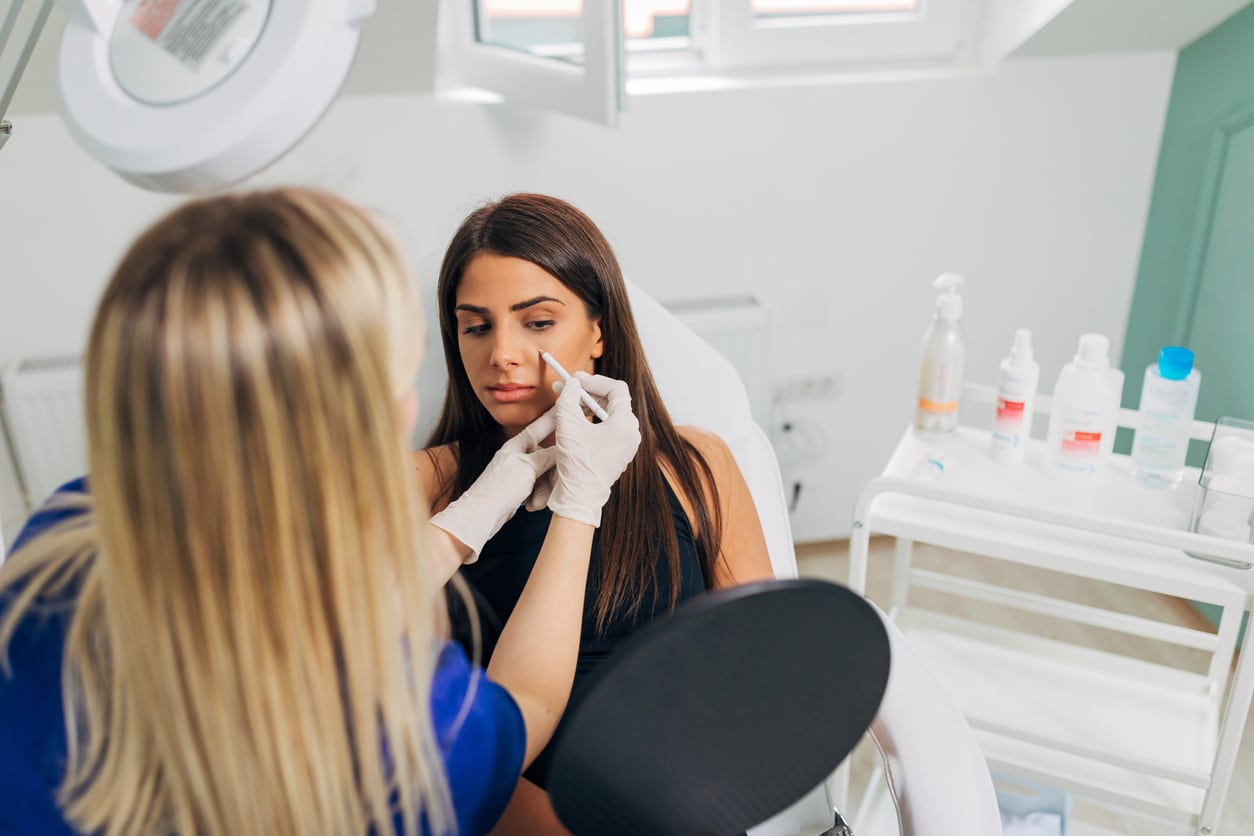Rhinoplasty, commonly called a nose job, is a surgical procedure used to reshape the nose for cosmetic or functional reasons. One of the most common cosmetic surgery procedures, there are more than 350,000 rhinoplasties performed in the United States each year. Let’s take a closer look at the procedure to help you understand your rhinoplasty options.
Why Do People Get Rhinoplasties?

Rhinoplasties are either cosmetic or medical. Cosmetic rhinoplasties may be recommended when a patient wishes to change the physical appearance of their nose. A few common cosmetic reasons to undergo a rhinoplasty include:
- To reshape an upturned, hooked, droopy or bulbous nose
- To reshape wide, small or large nostrils
- To make the nose look smaller for better facial balance
- To remove noticeable bumps or dips on the nose bridge
A few medical reasons a patient might undergo a rhinoplasty include:
- To repair a nasal fracture
- To correct a deviated septum
- To restore proper breathing function following disease or facial trauma
- To correct a congenital abnormality
What Happens During a Rhinoplasty?
Most rhinoplasties do not require a hospital stay, though you will require someone to drive you home and stay with you overnight following the procedure. Procedures may vary, but your facial plastics surgeon will likely follow these steps:
- The surgeon will make an incision either on the inside of your nostrils or across the base of your nose
- They will then raise the skin over the nasal bones and cartilage
- Next, the surgeon will rearrange, remove or add to the bone and cartilage to correct the deviated septum or alter the appearance
- Finally, they will reposition the skin covering the bones and cartilage and insert small stitches to secure it in place
Depending on the patient and the length of the procedure (usually between one and three hours), rhinoplasties may require general or local anesthesia. Following the procedure, your surgeon will place a small plastic splint or gauze to minimize swelling and maintain nasal shape.
Caring for Your Nose Following a Rhinoplasty
You will likely have nasal swelling for four to six weeks following your rhinoplasty. The swelling will slowly decrease between one and three months, but you will likely still have minimal swelling as much as a year following the procedure.
To help your nose heal, follow a few of these care instructions for a few weeks after your procedure:
- Apply cold compresses like frozen peas or cool towels to the areas surrounding, but not directly on, your nose
- Avoid contact sports like football in Sandy Creek Park until your provider gives you the go-ahead
- Avoid direct sun exposure
- Don’t blow your nose
Your provider may have more specific recommendations for your nose following a rhinoplasty. Strictly adhere to their recommendations for the best results.
If you want to learn more about a rhinoplasty procedure, contact the Facial Plastics Center at ENT of Athens today to schedule an appointment with one of our specialists.